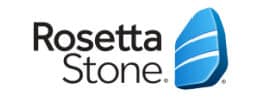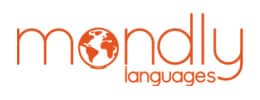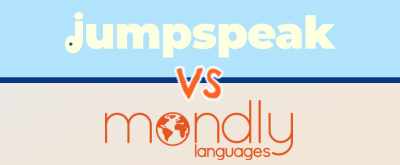Although the language apps Mondly and Rosetta Stone overlap in several areas, there are also a few key differences people should know before signing up. In this article, we highlight those differences so you can quickly determine which language app is the better fit for your specific needs.
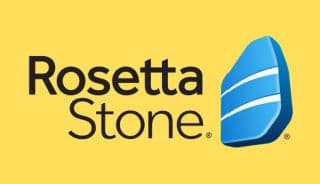
Discount: 60% OFF
Applied In Cart
|
$10-$15/mo |
The old-school, proven language app. With its emphasis on immersion and imagery, Rosetta Stone is the perfect choice for visual learners. |
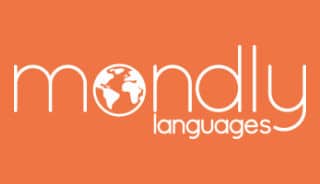
Sale: 50% OFF
Applied In Cart
|
$4-$10/mo |
A great app for beginners and learning new vocabulary. With a cool, modern interface and fast-moving lessons, it is quite different from Rosetta Stone. |
Video: Rosetta Stone or Mondly
In the video above, Bianca from the Guide2Fluency team compares the language learning apps from Mondly and Rosetta Stone.
Editor’s Choice

Rosetta Stone
- 20+ Languages
- Money Back Guarantee
Pros
- Immersive learning method is highly effective
- Ideal program for visual learners (lots of imagery and pictures)
- Nice roster of supplemental tools and resources
- Stellar speech recognition technology
Cons
- Slightly more expensive than Mondly
- Lessons can become somewhat boring/repetitive
Why Choose Rosetta Stone Over Mondly
Before we dive into the major reasons to use Rosetta Stone to learn a new language, let’s first discuss pricing, and how the app actually works.
How Rosetta Stone Works
When you start with Rosetta Stone, you’ll answer questions about your current knowledge and motivation for learning your target language. Based on your responses, Rosetta Stone creates a customized weekly study plan for you. The course is divided into 20 learning units covering various topics like work, school, places, and events, with each unit containing four lessons. Each Rosetta Stone lesson consists of sections focusing on pronunciation, vocabulary, reading, writing, and more.
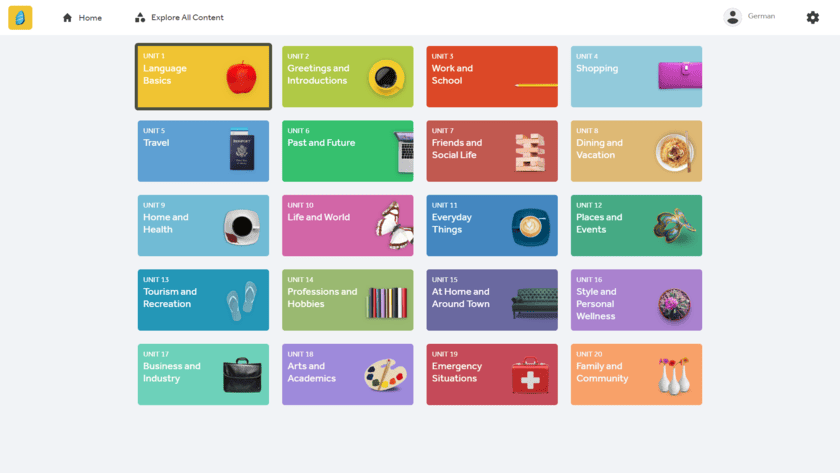
These sections typically take 5 to 30 minutes each to complete and use image-based drills and exercises. Unlike other apps, Rosetta Stone’s language courses emphasize immersion, limiting the use of English and encouraging learners to use the target language for all communication. This approach, though challenging, is effective for developing natural understanding through context and reasoning.
Cost Comparison
Rosetta Stone offers prospective users three options: a 3-month subscription, a 12-month subscription, and a lifetime subscription. The 3- and 12-month plans offer access to a single language and range from about $10 to $15 per month. The lifetime plan gives you access to all Rosetta Stone languages (20+) for around $400 (though it can often be found on sale for around $200).
Mondly, on the other hand, offers a limited free version that’s more like a trial. Most users opt for the Premium Plan, unlocking all content and features across their 40 languages. This plan costs $10 per month or around $100 per year with a 12-month advance payment.
Comparing the two, Mondly is notably more affordable. However, it’s worth noting that Rosetta Stone provides a free 3-day trial and a 30-day money-back guarantee, allowing you to test their service before committing fully.
Immersive Learning Method
One notable feature of Rosetta Stone is its immersive approach. As you progress through the course, you’ll find minimal use of English instructions and translations. While some may see this as a drawback, the company intentionally designs it this way.
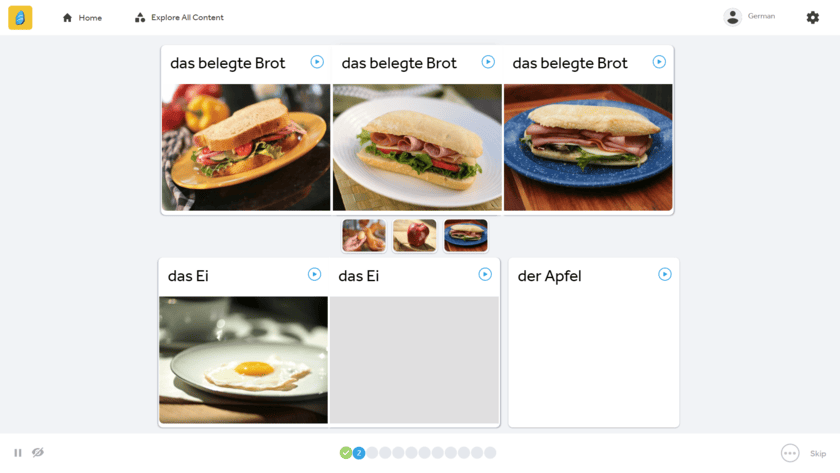
This approach mirrors the natural language acquisition process, similar to how toddlers learn language. The goal is to help you absorb the target language through visual context, inference, and intuition, rather than relying on direct translations. While this method requires patience, our team found it to be highly effective overall.
Visually Appealing Lessons
Rosetta Stone caters exceptionally well to visual learners. Almost every drill and exercise in the lessons includes images or graphics, making it the most visually oriented language program our team has encountered.
If you learn best through visual means rather than auditory or experiential learning, Rosetta Stone is likely a great fit for you, especially if you are learning German.
However, if you prefer video-based lessons over image-based ones, you might consider exploring LingoPie instead.
Pronunciation Feedback
Next, I want to highlight Rosetta Stone’s TruAccent technology, their speech recognition software developed over years of refinement. During verbal practice exercises, TruAccent provides immediate and accurate feedback on your pronunciation (unlike Busuu).
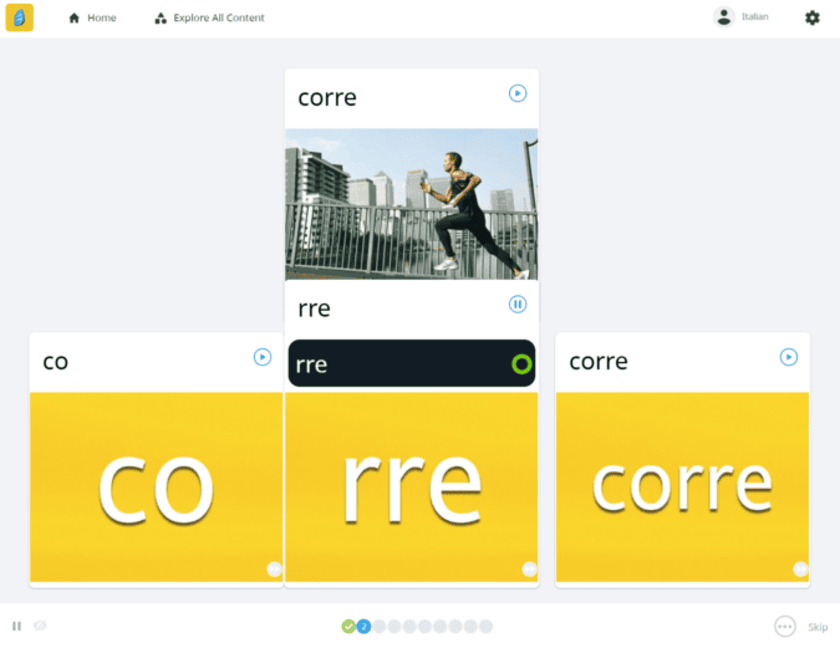
Having tested numerous language programs, our team rates Rosetta Stone’s TruAccent as one of the best voice software tools available.
TruAccent seamlessly integrates into lessons, is user-friendly, and notably accurate compared to other speech software used by language learning companies. Overall, Rosetta Stone earns high praise for its pronunciation development and feedback features (similar to Rocket Languages).
Supplemental Learning Resources
Rosetta Stone offers a variety of additional learning tools alongside its standard curriculum. These include live lessons with native instructors, short stories, audio companions, and a useful alphabet tool, among others.
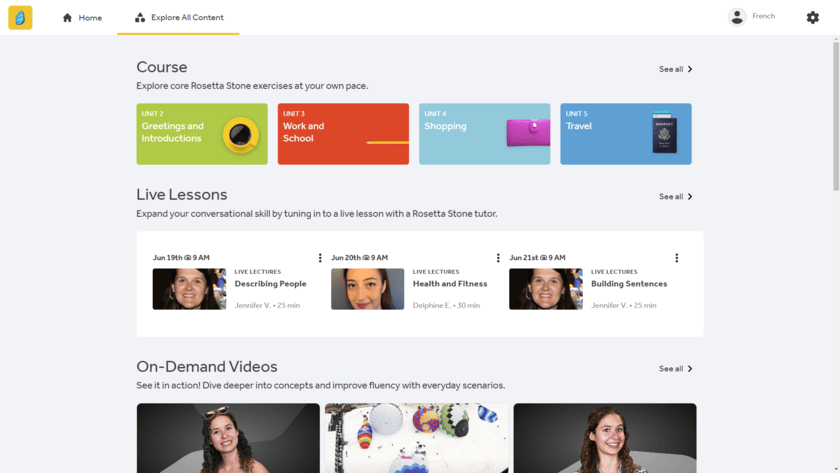
Among these resources, the short stories stand out to me. They provide a refreshing break from the standard lessons and offer a different approach to learning. You follow along as a fluent narrator tells a story, similar to a parent reading to a child. Afterwards, you can practice by reading the story aloud, helping to improve both your receptive (reading and listening) and productive (speaking) language skills.
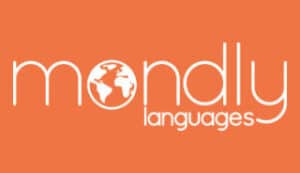
Mondly
- 40+ Languages
- AR & VR Apps
Pros
- More affordable than Rosetta Stone (less than $10/mo)
- Quick, engaging lessons
- Focus on learning new vocabulary
- AR & VR apps also available (unique and fun)
Cons
- Program overall could use more speaking practice
- Limited grammar instruction
Why Choose Mondly Over Rosetta Stone
Now that we’ve covered Rosetta Stone, let’s switch gears and discuss how Mondly works and why you should consider using their app to help you learn a new language.
How Mondly Works
Upon logging in, you’ll land on the main Mondly dashboard, which is designed as a map. The map features various landmark icons, each representing a different topic or theme. You can scroll horizontally to explore these “landmarks” on the interactive map.
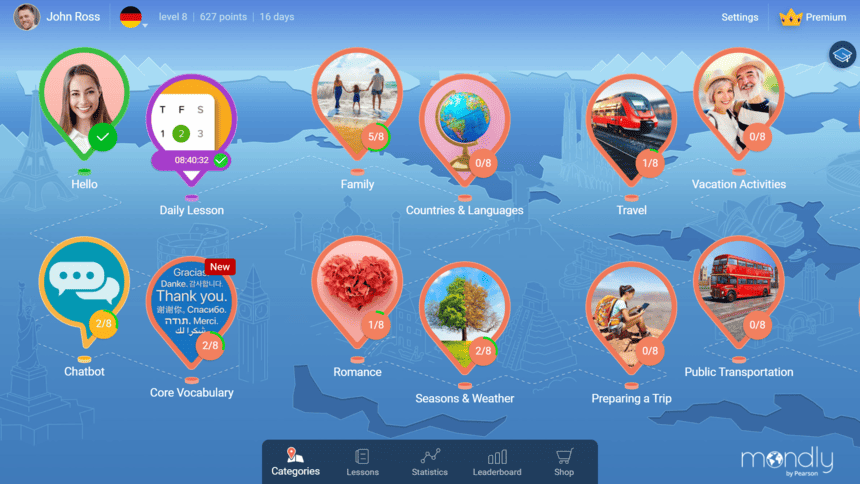
Topics include weather, travel, family, and more. Each topic typically contains 6 to 8 lessons. You can either complete lessons by selecting a “landmark” topic or follow Mondly’s daily lesson recommendations, as these lessons are designed to build on each other.
The daily lessons form the core of the curriculum, but you have the flexibility to skip ahead if desired. Completing all daily lessons for the week unlocks a weekly quiz, and completing all weekly quizzes unlocks a monthly challenge.
Mondly emphasizes consistency and streaks, encouraging users to stick to their daily assigned lessons (similar to Mango Languages).
Fun Learning Experience
One of the standout features of Mondly is its gamified approach to language learning, which adds an element of fun to the experience. The main dashboard is designed as an interactive map, which is engaging and enjoyable to navigate.
Additionally, Mondly offers a feature where you can track your progress and review what you’ve learned using an interactive brain tool. As you complete lessons and exercises, you earn points and can see your ranking on a leaderboard.
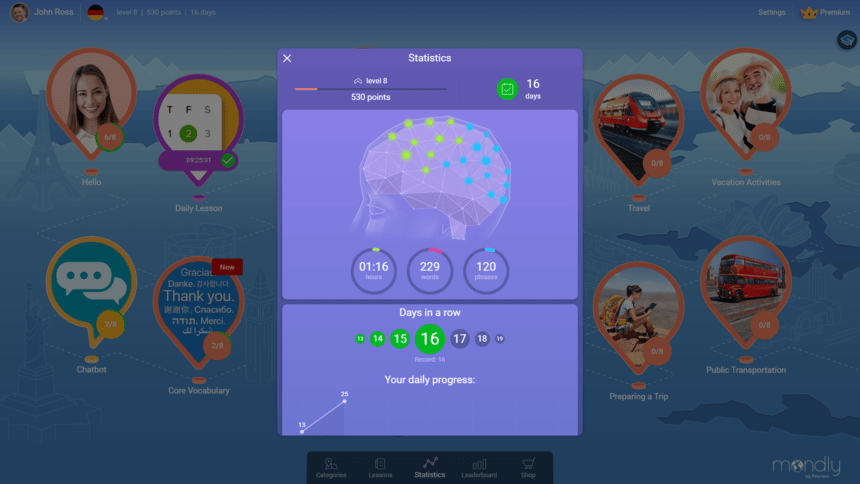
This allows you to track your streaks and compare your performance with friends and other Mondly users, providing motivation and a sense of accomplishment.
Overall, these gamification elements create a fun and game-like learning atmosphere, enhancing the overall language learning experience (similar to Babbel and Duolingo).
Unique AR/VR Apps
However, what sets Mondly apart and makes it truly stand out is its virtual reality (VR) and augmented reality (AR) learning apps, which complement their standard lessons.
The VR app offers a virtual immersion experience, placing you in various simulated environments where you interact with locals. Whether you’re ordering some soup, talking to a taxi driver, or chatting with a new friend on a bus, the VR app provides realistic scenarios for practicing your language skills.
While the VR app costs around $5, the requirement of an Oculus headset may limit accessibility for some users. Fortunately, Mondly also offers an AR app that is free with a premium account. The AR app scans your room and uses augmented reality technology to create a virtual teacher and animations in your environment.
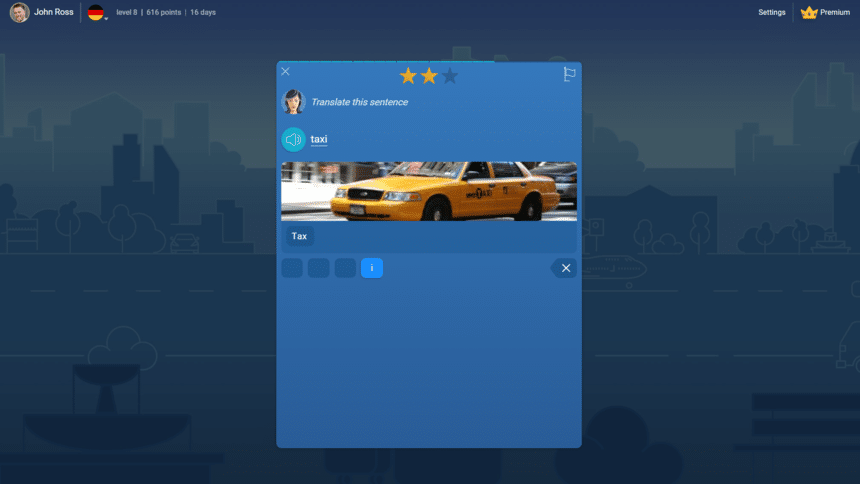
For instance, if you’re learning about fruit, the AR app will display CGI animations of apples, oranges, and bananas in your room. The virtual teacher provides instruction and background information, and you can interact with the animations, even walking around them for a 360-degree view.
I found the VR and AR apps to be refreshing additions to the standard lessons, offering valuable pronunciation and conversational practice. While they’re not standalone programs, they complement traditional lessons and add a fun, tech-savvy element to language learning.
Job-Specific Language Lessons
One more advantage of Mondly is its job-specific courses and lessons, a feature that sets it apart from Rosetta Stone and other competitors. These courses cater to working professionals, offering valuable content related to marketing, negotiations, customer service, finance, healthcare, and other fields.
If you’re learning a new language for professional reasons, Mondly’s job-specific courses can be incredibly beneficial, making it a strong choice for career-oriented language learners.
Verdict: Which Language App Is Better?
After thoroughly testing both programs, the decision is a close one. While Mondly offers innovative and enjoyable learning experiences with its VR and AR apps, I ultimately give the edge to Rosetta Stone.
I believe Rosetta Stone is the superior option for those serious about learning a new language. Their speech recognition technology is more advanced, their lessons are slightly more comprehensive than Mondly’s, and they offer a wealth of additional resources, including live classes. Overall, I think Rosetta Stone is the better choice.
👉Read Next: Mondly vs Pimsleur
The main differences between Rosetta Stone and Mondly lie in their approach to language learning. Rosetta Stone focuses on immersive learning without translation, while Mondly combines traditional lessons with gamification and offers VR and AR apps for added immersion.
In my opinion, Rosetta Stone is superior to Mondly due to its more advanced speech recognition technology, comprehensive lessons, and abundance of additional resources, including live classes. These features provide a more immersive and effective learning experience.

